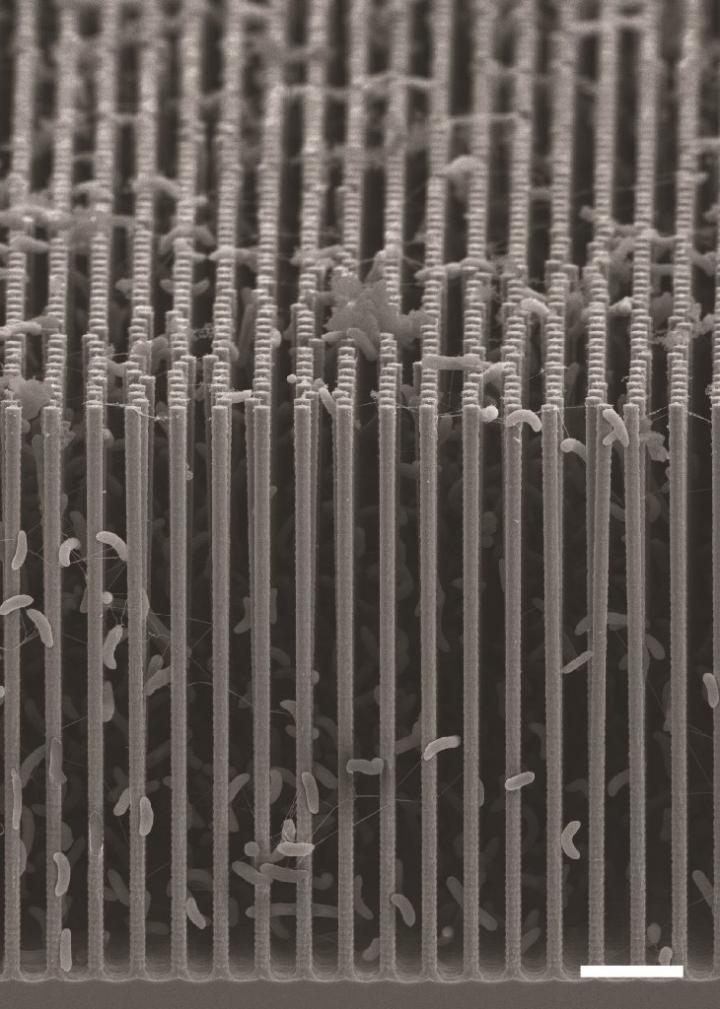The system mimics the natural photosynthetic process by which plants use the energy in sunlight to synthesize carbohydrates from carbon dioxide and water but this artificial photosynthetic system synthesizes the combination of carbon dioxide and water into acetate, the most common building block today for biosynthesis.
By combining biocompatible light-capturing nanowire arrays with select bacterial populations, the new artificial photosynthesis system offers a win/win situation for the environment: solar-powered green chemistry using sequestered carbon dioxide. The system starts with an "artificial forest" of nanowire heterostructures, consisting of silicon and titanium oxide nanowires.

SEM of Nanowire/Bacteria Hybrid Array. Credit: Lawrence Berkeley National Laboratory
When sunlight is absorbed, photo-excited electron-hole pairs are generated in the silicon and titanium oxide nanowires, which absorb different regions of the solar spectrum. The photo-generated electrons in the silicon will be passed onto bacteria for the CO2 reduction while the photo-generated holes in the titanium oxide split water molecules to make oxygen.
Once the forest of nanowire arrays is established, it is populated with microbial populations that produce enzymes known to selectively catalyze the reduction of carbon dioxide. For this study, the team used Sporomusa ovata, an anaerobic bacterium that readily accepts electrons directly from the surrounding environment and uses them to reduce carbon dioxide. Once the carbon dioxide has been reduced by S. ovata to acetate (or some other biosynthetic intermediate), genetically engineered E.coli are used to synthesize targeted chemical products. To improve the yields of targeted chemical products, the S. ovata and E.coli were kept separate for this study. In the future, these two activities - catalyzing and synthesizing - could be combined into a single step process.





Comments